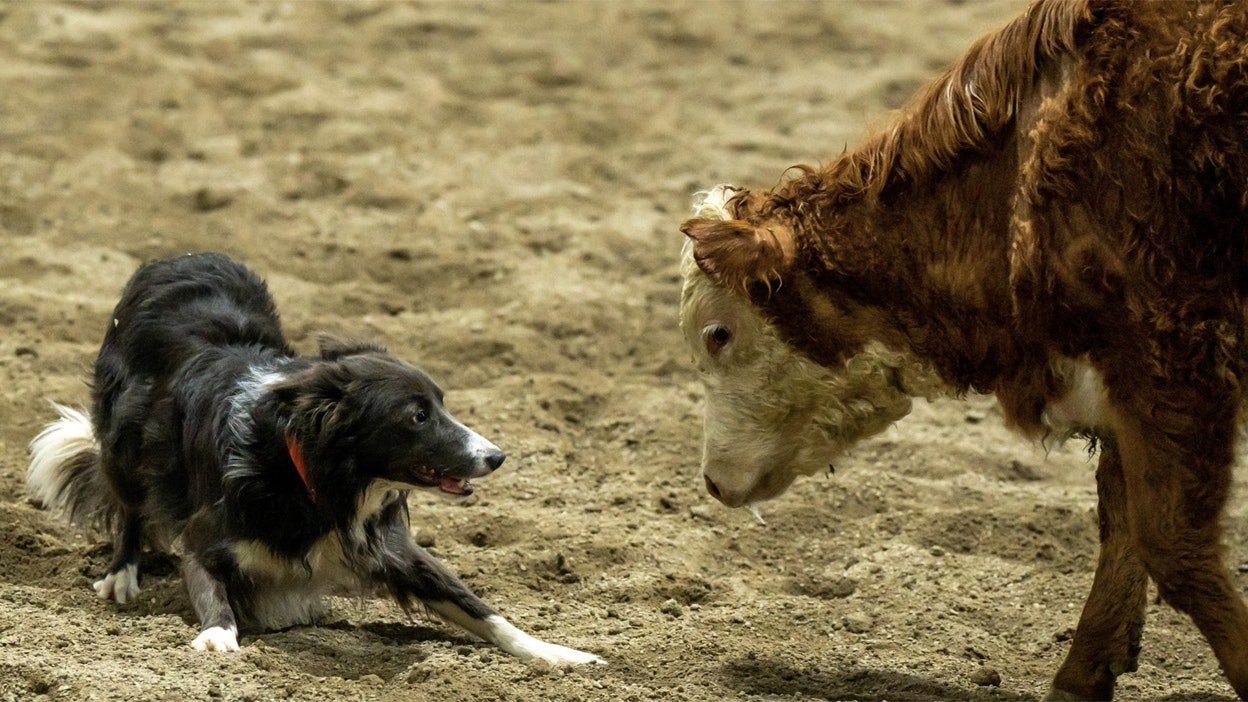Competing in a stock dog competition is like rubbing your belly while patting your head and backing up a horse trailer with your eyes closed — all at the same time.
That’s how Shannon Webber, a dog handler from Bozeman, Montana, describes it. Webber and about 120 other stock dog competitors from all over the U.S. and Canada competed in the Mountain States Stock Dog National Finals at the Lincoln County Fairgrounds in Afton.
“If you can do everything in sync and have it all work out right, the adrenaline rush that comes with it is really fun,” Webber said. “To do well as a handler you have to be focused and grounded and present in the moment.”
Like their owners, Wyoming stock dogs are working animals, which is just what’s on display at a stock dog competition.
Pedigree, breeding and perfect posture mean nothing here. All that matters is how well the dog does its job herding other domestic animals.
These Are The Best
Ray Temple, a competitor from Lexington, Oregon, and owner of the Go For Broke Ranch, said it’s rewarding to train a dog and then show others what it can do in competition.
The competition separates entrants into different ability categories. Classes range from novice to open in this six-day event, and all the dogs here have had to earn points at other trial events to qualify.
In other words, this where the best stock dogs come to compete.
Although competitors are divided into class levels, every tournament entrant’s task is essentially the same. It’s a timed event where the dog and handler must move five sheep or three 600-pound steers or heifers through a series of obstacles.
The dogs receive a score based on how the livestock navigate the obstacles.
During this competition one dog and one handler will enter an arena, and when they are ready, the handler will give a hand signal to release the sheep or calves. A gate swings open and the handler gives the dog a command to “come by.”

Herd Mentality
A laser-focused 40-pound border collie launches in the direction of the somewhat confused, unassuming bovines.
At this point, the dog, livestock and handler engage in a game of back and forth, left and right, fast and slow movements that ends in 6 minutes or less.
This scene will play out more than 1,000 times over the week. About 90% of the dogs here are border collies. There are a few Australian shepherds and kelpies.
Luck of the draw is key. When a handler and dog team draw a group of stock that stays bunched up, it’s a controlled dance. When one of the cows or sheep decides not to cooperate it can get chaotic.
Jeannie Biggers, a competitor and associate vice president of the Mountain States Stock Dog Association, explained the commands used to direct the dogs.
Come by means circle right or clockwise. If the cows move left, the handler gives the “away” command which tells the dog to circle left or counter-clockwise. Other commands include “walk up” or get closer, “Lay” meaning lay down or stop your feet, “get off” or “get out” means back off.
Biggers, also from Bozeman, said the cattle are a little more forgiving if a dog over-flanks them. Sheep are more sensitive to the dog’s presence and if a dog gets too far in either direction, the sheep will react accordingly.
“The dogs have to be more precise on sheep and they have to be strong and brave in their presence to get the correct reaction from cattle,” Biggers said.
When everything clicks it’s fun to watch and rewarding for the handler. But things don’t always go as planned.
Jen and Koey
On the second day of the event there was standing water in the arenas for the cattle competition. Some of the dogs didn’t like working in 2 inches of slop while others didn’t seem to care.
Jen, a brindle-colored border collie, and Ray Temple drew two calm steers and a jumpy red heifer. They score 90 out of a possible 270 and they’re out of the money. On the first day Jen scored a 226 and won the intermediate class competition.
Koey is a 50-pound black-and-white male border collie owned by Shannon Webber. On his first day, Koey“gripped out,” meaning he bit one of the sheep and didn’t want to let go. He was disqualified.
Temple owns a small ranch and his dogs, like most of the other competitors, work livestock nearly every day.
Webber said drawing a bad calf is part of what makes the stock dog competition so challenging – both the handler and the dog must make correct spur-of-the-moment decisions.
She said it’s easier to put the two cooperating sheep or cattle back with the troublemaker than the other way around.
Rough Work
Webber is known as an urban handler because she doesn’t own a ranch or livestock. She trains her dogs with a friend’s stock about twice each week but spends time training every day, even if it’s only for a few minutes.
“Repetition helps keep their head in the game,” she said.
Biggers said the association payout for the competition is about $100,000, including belt buckles and other prizes. Some competitors qualify several dogs.
Handlers range from as young as 9 to as old as “80-something,” she said, while the dogs range in age from 18 months to about 11 years.
Biggers said the sport is family oriented and growing.
Started stock dogs, dogs that have begun but haven’t finished their training, can fetch as much as $10,000 each.
“Afton is an amazing town and the people here as so welcoming,” she said. “For a lot of the families that are here today, this is their summer vacation.”





